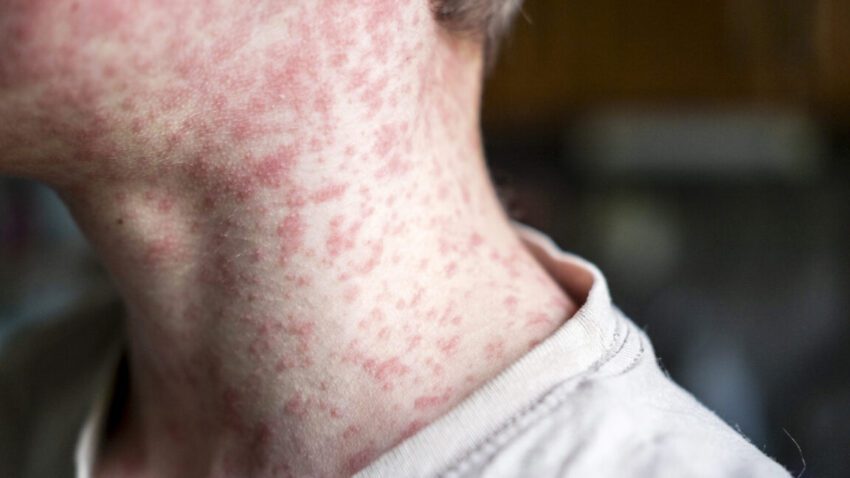
measles outbreak in sc sends 150 unvaccinated Health officials in South Carolina are warning that the highly infectious measles virus is spreading undetected in communities in the northern part of the state, specifically Spartanburg and Greenville counties.
measles outbreak in sc sends 150 unvaccinated
Current Situation and Outbreak Details
As of last week, health officials in Greenville confirmed an eighth case of measles that is potentially linked to an ongoing outbreak. This follows the identification of seven confirmed cases since September 25 in Spartanburg County. The outbreak has primarily affected two educational institutions: Fairforest Elementary School and Global Academy, a public charter school. The rapid spread of the virus has raised significant concerns among health officials and parents alike.
According to state officials, at least 153 unvaccinated children were exposed to the virus across these two schools. As a precautionary measure, these children have been placed under a 21-day quarantine. This quarantine period is critical, as it represents the maximum incubation period for measles, which spans from the time of exposure to the point when an infected individual may begin to exhibit symptoms, such as a rash. The quarantine is intended to prevent further transmission of the virus within the community.
Understanding Measles and Its Transmission
Measles is a highly contagious viral infection that can lead to severe health complications, including pneumonia, encephalitis, and even death. The virus is primarily spread through respiratory droplets when an infected person coughs or sneezes. It can remain airborne for up to two hours in an enclosed space, making it particularly dangerous in schools and other communal settings.
The symptoms of measles typically appear 10 to 14 days after exposure and include high fever, cough, runny nose, and a characteristic red rash that usually starts on the face and spreads to the rest of the body. Complications can arise, especially in young children and individuals with weakened immune systems.
Vaccination Rates and Public Health Concerns
The outbreak in South Carolina has highlighted ongoing concerns regarding vaccination rates in the region. Vaccination against measles is part of the MMR (measles, mumps, and rubella) vaccine, which is recommended for children at 12 to 15 months of age, with a second dose typically given between ages 4 and 6. The Centers for Disease Control and Prevention (CDC) recommends that at least 95% of a community be vaccinated to achieve herd immunity, which helps protect those who cannot be vaccinated, such as infants and individuals with certain medical conditions.
In recent years, vaccination rates have fluctuated, with some communities experiencing declines due to vaccine hesitancy, misinformation, and personal beliefs. This outbreak serves as a stark reminder of the importance of maintaining high vaccination coverage to prevent the resurgence of preventable diseases like measles.
Community Response and Health Officials’ Actions
In response to the outbreak, health officials in South Carolina have ramped up efforts to educate the public about the importance of vaccination. They are conducting outreach programs in schools and communities to inform parents about the risks associated with measles and the benefits of immunization. Additionally, health departments are offering vaccination clinics to ensure that children are up-to-date on their immunizations.
State officials have emphasized the importance of monitoring for symptoms and seeking medical attention if a child exhibits signs of measles. Parents are encouraged to report any suspected cases to their healthcare providers immediately. The proactive approach aims to contain the outbreak and prevent further spread of the virus.
Implications for Schools and Parents
The quarantine of 153 unvaccinated children has significant implications for both schools and families. For the affected students, being barred from attending school for 21 days can disrupt their education and social interactions. Parents may face challenges in managing childcare during this period, especially if they are unable to work from home.
Schools are also affected, as they must implement additional health and safety measures to protect students and staff. This includes increased cleaning protocols, monitoring for symptoms, and potentially adjusting schedules to accommodate quarantined students. The situation underscores the need for schools to have robust health policies in place to respond to outbreaks effectively.
Stakeholder Reactions
The outbreak has elicited a range of reactions from stakeholders, including parents, educators, and public health officials. Many parents have expressed concern for the health and safety of their children, particularly those who are too young to be vaccinated or who have medical conditions that prevent them from receiving vaccines.
Educators have voiced the need for clear communication from health officials to ensure that they can adequately support students during the quarantine period. Some have called for more resources to help families navigate the challenges posed by the outbreak, including access to online learning materials and mental health support.
Public health officials have reiterated the importance of community cooperation in addressing the outbreak. They have called on parents to ensure that their children are vaccinated and to remain vigilant about monitoring for symptoms. The collective effort of the community is essential in controlling the spread of measles and protecting vulnerable populations.
Historical Context of Measles Outbreaks in the U.S.
Measles was declared eliminated in the United States in 2000 due to high vaccination rates. However, outbreaks have occurred in recent years, often linked to unvaccinated populations. The resurgence of measles is attributed to several factors, including vaccine hesitancy fueled by misinformation and the growing trend of opting out of vaccinations for personal or philosophical reasons.
In 2019, the U.S. experienced its highest number of measles cases since 1992, with over 1,200 reported cases across 31 states. These outbreaks were primarily concentrated in communities with low vaccination rates. The current situation in South Carolina serves as a reminder that the threat of measles remains real, and ongoing efforts are needed to maintain high vaccination coverage.
Looking Ahead: The Importance of Vaccination
As the outbreak in South Carolina unfolds, it is crucial for communities to recognize the importance of vaccination in preventing the spread of infectious diseases. Public health campaigns must continue to address vaccine hesitancy and misinformation, providing accurate information about the safety and efficacy of vaccines.
Health officials urge parents to consult with their healthcare providers about vaccination schedules and to ensure that their children receive all recommended vaccines on time. The collective responsibility of the community to protect public health cannot be overstated, especially in light of the current outbreak.
In conclusion, the measles outbreak in Spartanburg and Greenville counties serves as a critical reminder of the importance of vaccination and community health. As health officials work to contain the spread of the virus, the cooperation of parents, schools, and the broader community will be essential in ensuring the safety and well-being of all residents.
Source: Original report
Was this helpful?
Last Modified: October 14, 2025 at 3:36 am
1 views















